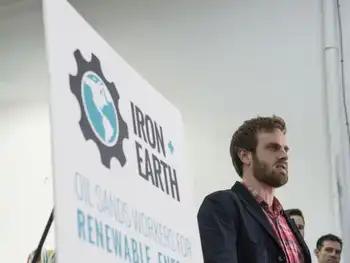Interference goes green: OntarioÂ’s Green Energy Act
Ontario was at one time an internationally recognized leader in the theory and practice of public utility regulation. The Ontario Energy Board (OEB) has been led by, and has also hosted, many of the top experts in the related fields of law, economics, accounting and public administration.
The Ontario government introduced the Green Energy Act in an effort to promote renewable electricity production and conservation. If passed, this legislation will destroy the foundations of effective public utility regulation in Ontario. Energy and Infrastructure Minister George SmithermanÂ’s misguided action will also inflict lasting harm to the reputation of the green energy cause. It also, almost as an aside, grants unusually extreme search-and-seizure powers to state inspectors searching for illegal appliances and other breaches of the law.
The foundation for OntarioÂ’s historic success in public utility regulation lies in the simple, logical structure of the system. Historically, the mandating legislation of the Ontario Energy Board and the history of supporting precedents and decisions were based on the principle that customers will pay no more than necessary to ensure good quality utility service over the long term. Investors recover their costs, including a reasonable rate of return on their investments, but only prudently incurred costs can be recovered. Imprudent costs are borne by shareholders. Governments of the day could influence the process by controlling appointments to the OEB, but otherwise the OEB enjoyed substantial independence.
In place of these sound principles, the new legislation allows extensive political interference in utility regulation and requires the regulator to approve excessive rates for consumers if the underlying costs are associated with politically preferred projects.
Where once rates were based on analytical methods like benchmarking to assess prudence, under the Green Energy Act, new criteria like domestic manufacturing content requirements will take precedence. Just as the United States brings in Buy America trade distorting rules, Ontario will have a Buy Ontario provision for green energy. One official reported there would be a domestic content rule of 50%. Any NAFTA experts in the house? Regulatory rules developed over decades to insulate regulated rates from costs associated with unregulated business activities of utility holding companies will be swept away.
The OEB will now be required to take over a basic function of the legislature — implementing taxes to pay for expenditures of the Ministry of Energy and Infrastructure. The minister’s whims will determine which customers pay extra costs for green energy projects and which customers get relieved of this burden. Of course, squeezing the cost balloon at one end will cause it to bulge wider at the other end.
Turning away from the regulatory model that served Ontario so successfully and replacing it with these conflicted requirements is being done to ensure that the conservation and renewable energy options the minister seeks to promote can avoid a regulatory test of prudence.
Any conservation and renewable energy developments that benefit consumers will be diluted in an ocean of inefficient projects. As electricity rates march upward, customers will not be able distinguish the worthwhile projects from the dead weight. Particularly if the economy worsens, green projects will become symbols of profligacy.
Government dictates on energy labelling for real estate on the market for sale or lease, as well as energy and water usage limits on appliances, will be backed up by the threat of searches of dwellings by government agents. As the proposed in the act, warrants could be issued to inspectors “to enter or access the building, dwelling, receptacle or place specified in the warrant and examine and seize anything described in the warrant.” As if protecting homeowners from undue persecution, any “entry or access under a warrant issued under this section shall be made between 6 a.m. and 9 p.m.” But then, in typical bureaucrat back-track, it adds that the 6-to-9 be waived if “the warrant specifies otherwise.”
Municipal and condominium bylaws that infringe on governmentÂ’s green energy priorities will be swept away, reducing the role for local communities to manage themselves.
When Ontario Hydro collapsed in 1998, the then Conservative provincial government attempted to implement a competition-oriented model with a limited role for government. Since that moment, every successive legislative change, policy initiative and ministerial directive has expanded the authority of cabinet. The Green Energy Act brings legal force to the view that previous power grabs simply did not go far enough.
Not surprisingly, the Green Energy Act has been lauded by businesses and unions that today have the governmentÂ’s ear, by those who think that environmental protection can be measured by how many wind turbines stand on the horizon, and also by those who think that renewable energy and conservation are inherently beneficial irrespective of cost.
The impact on consumers will be incremental. Ontario power consumers are already in line for rate increases to absorb the costs of secret contracts the province has signed with power producers. The new act ensures even greater price increases in the years to come. Even if regulatory integrity and competition are someday restored, it will take at least a generation for consumers to pay down the cost of imprudent decisions the province of Ontario makes today.
Related News

Opinion: Fossil-fuel workers ready to support energy transition
EDMONTON - Except for an isolated pocket of skeptics, there is now an almost universal acceptance that climate change is a global emergency that demands immediate and far-reaching action to defend our home and future generations. Yet in Canada we remain largely focused on how the crisis divides us rather than on the potential for it to unite us.
It’s not a case of fossil-fuel industry workers versus the rest, or Alberta versus British Columbia. We are all in this together. The challenge now is how to move forward in a way that leaves no one behind.
The fossil fuel industry has…





